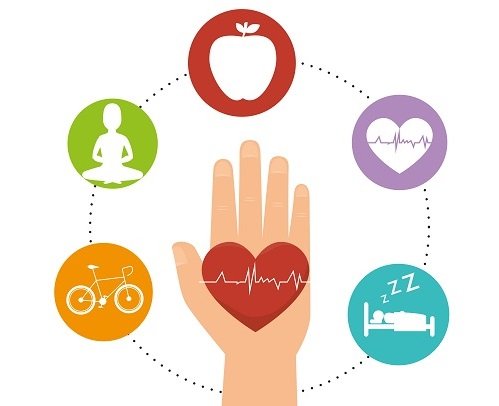Conquer Unhealthy Habits: Your Guide to Lasting Change

Updated at: 2025-05-30 10:19:27 (4 months ago by Melkisedeck Leon Shine)
```htmlOvercoming Unhealthy Habits: A Transformative Approach
This article explores the process of behavioral modification, specifically focusing on strategies for overcoming unhealthy habits. We will define key concepts like habit loops, self-efficacy, and the transtheoretical model of behavior change, illustrating their application in practical scenarios. The ultimate aim is to provide a comprehensive framework for achieving lasting positive change.
Understanding and Addressing Unhealthy Habits
The initial step in breaking free from unhealthy habits involves a thorough self-assessment. This requires a conscious effort to identify and analyze existing behavioral patterns. This process aligns with the precontemplation and contemplation stages of the Transtheoretical Model, where individuals recognize the problem and begin considering change. For example, meticulously recording daily activities, including frequency and triggers associated with the undesired behavior, offers valuable insights. This data-driven approach allows for the identification of specific habits hindering personal growth and well-being. This might include excessive screen time, unhealthy dietary patterns, or procrastination.
Establishing SMART Goals and Replacement Behaviors
Once unhealthy habits are identified, the next crucial step is setting SMART (Specific, Measurable, Achievable, Relevant, and Time-bound) goals. This aligns with the preparation stage of the Transtheoretical Model. For instance, instead of vaguely aiming to "eat healthier," a SMART goal might be "Reduce daily sugar intake by 50 grams within the next four weeks, measured by a food diary." Simultaneously, it is essential to replace unhealthy behaviors with healthier alternatives. This involves substituting the undesired behavior with a behavior that serves a similar purpose but is aligned with one’s goals. For example, if stress-eating is a problem, replacing it with relaxation techniques like meditation or deep breathing becomes crucial. This concept is based on the principle of operant conditioning, where replacing a maladaptive behavior with a more adaptive behavior, reinforced by positive outcomes, can lead to lasting change.
Leveraging Social Support and Environmental Modification
The social context plays a significant role in behavior change. Seeking support from friends, family, or support groups is crucial. This relates to social cognitive theory, highlighting the influence of observational learning and social modeling. Sharing goals with a support network boosts self-efficacy, the belief in one's ability to succeed. Furthermore, modifying the environment to minimize exposure to triggers is critical. This could involve removing tempting snacks from the house or uninstalling distracting apps. This strategic environmental manipulation helps minimize the probability of relapses, leveraging principles of stimulus control.
Self-Care, Progress Monitoring, and Setback Management
Self-efficacy, a key component of the Social Cognitive Theory, is significantly enhanced through consistent self-care practices. Prioritizing physical and mental well-being, through activities like exercise, sufficient sleep, and mindfulness, improves resilience and reduces the susceptibility to reverting to unhealthy habits. Regular progress monitoring, utilizing habit trackers or journals, provides valuable feedback and reinforces positive behaviors. The action and maintenance stages of the Transtheoretical Model emphasize the importance of this consistent self-monitoring and reinforcement. Setbacks are inevitable. However, by viewing these as learning opportunities and adjusting strategies accordingly, individuals can maintain momentum. This adaptive process aligns with the principles of cognitive restructuring, where negative self-talk and maladaptive thought patterns are challenged and replaced with more positive and constructive ones.
Maintaining Motivation and Seeking Professional Assistance
Maintaining motivation requires consistent effort and a focus on long-term goals. Utilizing strategies like reward systems, visualizing success, and regularly reviewing progress can help sustain momentum. However, recognizing limitations is vital. If self-directed efforts prove insufficient, seeking professional help from therapists or counselors is advisable. These professionals can provide tailored strategies, address underlying psychological issues, and offer valuable support. This highlights the importance of seeking assistance when needed, particularly in cases involving addiction or deeply ingrained habits. The decision to seek professional help reflects a mature understanding of one’s limitations and a commitment to achieving lasting change. This underscores the importance of proactive management of the change process. Professional guidance often employs evidence-based interventions and can provide structured support aligned with the individual's specific needs.
Conclusion and Recommendations
Successfully breaking free from unhealthy habits involves a multi-faceted approach incorporating self-awareness, goal setting, environmental modification, social support, self-care, and consistent effort. The Transtheoretical Model provides a valuable framework for understanding the stages involved in behavior change. By strategically applying concepts from operant conditioning, social cognitive theory, and cognitive restructuring, individuals can significantly enhance their chances of achieving lasting positive change. Further research could explore the effectiveness of specific interventions targeting different types of unhealthy habits and diverse demographic groups. The development of personalized digital tools that leverage progress tracking and adaptive feedback could enhance the efficacy of behavioral modification strategies. The focus should be on creating sustainable lifestyle modifications, rather than solely concentrating on immediate results.
Reader Pool: What are your perspectives on the relative effectiveness of different behavioral change models in addressing various types of unhealthy habits?
```
